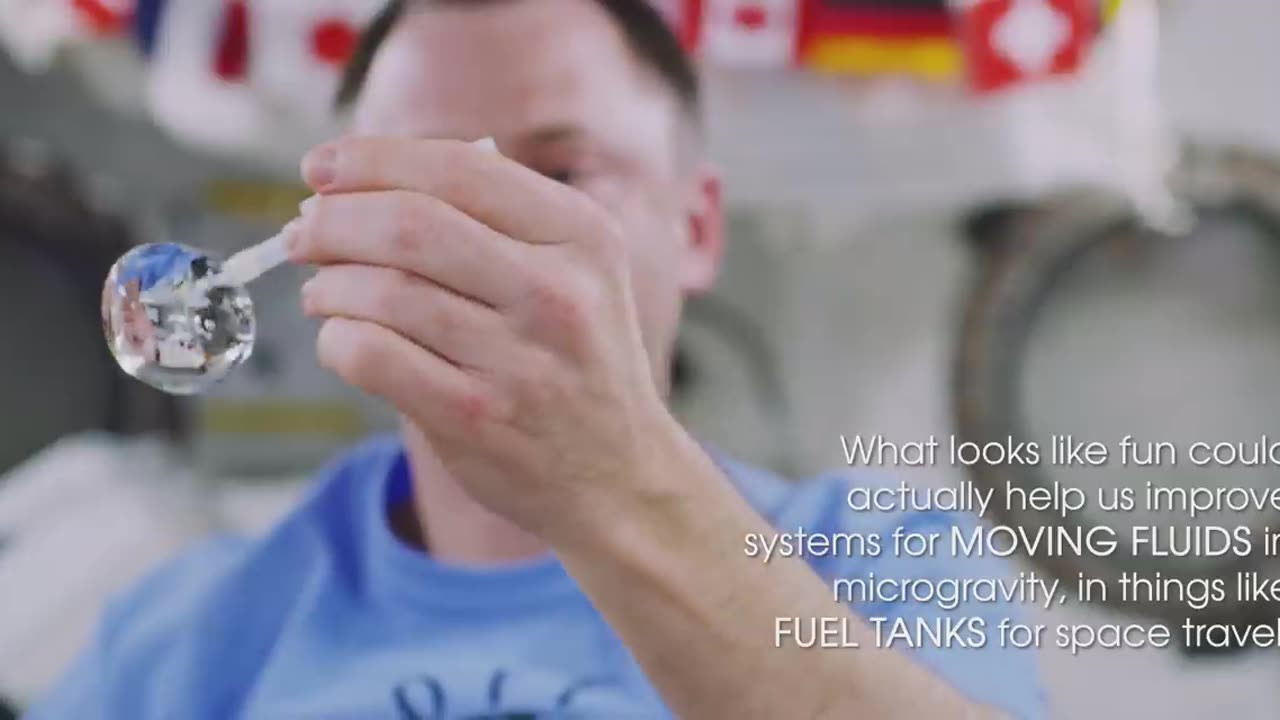Premium Only Content

Moving Water in Space
Moving water in space can present unique challenges due to the lack of gravity. In a zero-gravity environment, water behaves differently compared to its behavior on Earth. Without the downward force of gravity, water forms into spherical droplets and clings to surfaces. This phenomenon is known as the "globule effect."
To move water in space, astronauts and space agencies utilize various techniques and technologies. Here are some methods used:
1. Water Management Systems: Spacecraft, such as the International Space Station (ISS), have sophisticated water management systems that collect, filter, and treat all the water used on board. These systems ensure efficient water usage and recycling.
2. Liquid Transfer: Liquid transfer systems are used to move water between tanks and various compartments within a spacecraft. These systems often rely on pumps, pipes, and pressure differentials to move water where it is needed.
3. Capillary Action: Capillary action makes use of the surface tension of water to move it through small tubes or spaces. By engineering tiny channels or structures, water can be directed and moved without the need for gravity.
4. Centrifugal Force: Centrifuges can be used to create artificial gravity or pseudo-gravity. By spinning a spacecraft or a specific compartment, centrifugal force simulates gravity, causing water to flow in a manner similar to its behavior on Earth.
5. Electromagnetic Fields: Magnetic fields can be used to manipulate water droplets in space. By applying an electric current to small amounts of water, astronauts can control the movement and shape of the droplets.
These methods are employed to ensure astronauts have access to water for various purposes, including drinking, hygiene, and scientific experiments. Additionally, understanding how water behaves in space is crucial for future long-duration space missions and the establishment of sustainable human presence beyond Earth.
-
 40:01
40:01
CarlCrusher
18 hours agoSkinwalker Encounters in the Haunted Canyons of Magic Mesa - ep 4
40.9K2 -
 59:44
59:44
PMG
1 day ago $4.29 earned"BETRAYAL - Johnson's New Spending Bill EXPANDS COVID Plandemic Powers"
50.2K14 -
 6:48:50
6:48:50
Akademiks
17 hours agoKendrick Lamar and SZA disses Drake and BIG AK? HOLD UP! Diddy, Durk, JayZ update. Travis Hunter RUN
172K28 -
 11:45:14
11:45:14
Right Side Broadcasting Network
9 days agoLIVE REPLAY: TPUSA's America Fest Conference: Day Three - 12/21/24
355K28 -
 12:19
12:19
Tundra Tactical
17 hours ago $13.10 earnedDaniel Penny Beats Charges in NYC Subway Killing
72.1K13 -
 29:53
29:53
MYLUNCHBREAK CHANNEL PAGE
1 day agoUnder The Necropolis - Pt 1
161K52 -
 2:00:10
2:00:10
Bare Knuckle Fighting Championship
3 days agoCountdown to BKFC on DAZN HOLLYWOOD & FREE LIVE FIGHTS!
61.8K3 -
 2:53:01
2:53:01
Jewels Jones Live ®
1 day agoA MAGA-NIFICENT YEAR | A Political Rendezvous - Ep. 103
155K39 -
 29:54
29:54
Michael Franzese
20 hours agoCan Trump accomplish everything he promised? Piers Morgan Article Breakdown
139K83 -
 2:08:19
2:08:19
Tactical Advisor
1 day agoThe Vault Room Podcast 006 | Farwell 2024 New Plans for 2025
200K11